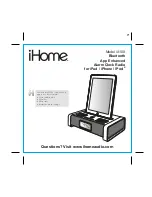
34
MDS 4790M (MPT 1411) I/O Guide
MDS 05-3628A01, Rev. B
• 1200
• 2400
• 4800
• 9600
• 19200 (default setting)
Example:
DLINK 4800
sets the RJ-11
DIAG
port to operate at 4800 bps.
The
same baud rate must be entered into the InSite Equipment List’s
BAUD
field.
The default setting is
DLINK ON
.
DMGAP [xx]
The
DMGAP
command sets the amount of time in milliseconds to wait after the
receipt of a character before interpreting the next received character as the start
of a new message. When baud rates are slow, the gap between characters
within a poll may be so long that the radio interprets the next character as the
start of a new poll. When diagnostics is being performed using passive rather
than active messaging (see “Performing Network-Wide Radio Diagnostics” on
page 65), this command may be used to prevent such errors.
DTYPE [NODE/ROOT/GATE/PEER]
This command configures a radio’s type for network-wide diagnostics. For
most radio systems, it is sufficient to define a radio as a root or node radio. The
root radio is the radio connected to the host computer for non-intrusive
diagnostics functions. Only one root can be specified per radio network.
The
GATE
and
PEER
setting are used for complex radio networks and are
included to accommodate network-wide diagnostics in simplex and special
radio network configurations.
Entering
DTYPE NODE
configures the radio as a node radio. Entering
DTYPE
ROOT
configures the radio as a root radio. Entering the
DTYPE
command
alone displays the current setting. The default setting is
NODE
.
See Section 7.2,
Performing Network-Wide Radio Diagnostics
, beginning on
page 65. A complete explanation of remote diagnostics can be found in GE
MDS’ Network-Wide Diagnostics System Handbook.
DUMP
The
DUMP
command displays programming and status information in one
quick step. Entering the
DUMP
command produces the same results as entering
a series of commands that display radio information, without having to type
each command. The output format is identical to what you would see if you had
entered the individual commands one after another:
EMP [ON/OFF]
This command is used to enable or disable pre-emphasis and de-emphasis on
the analog input and output signals.
>command
command output
>command
command output
...
Emphasis screen, page 54
















































